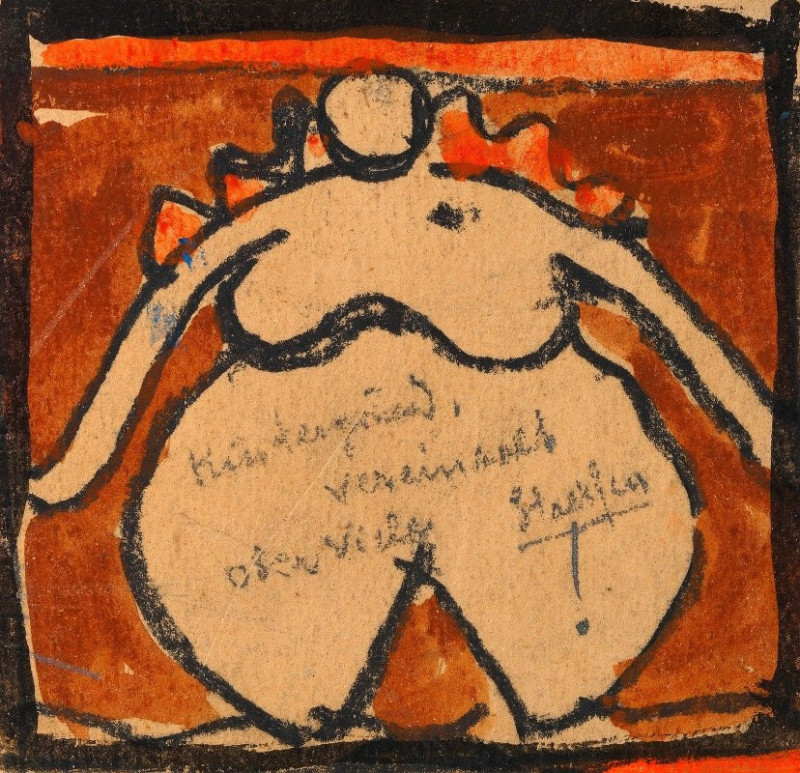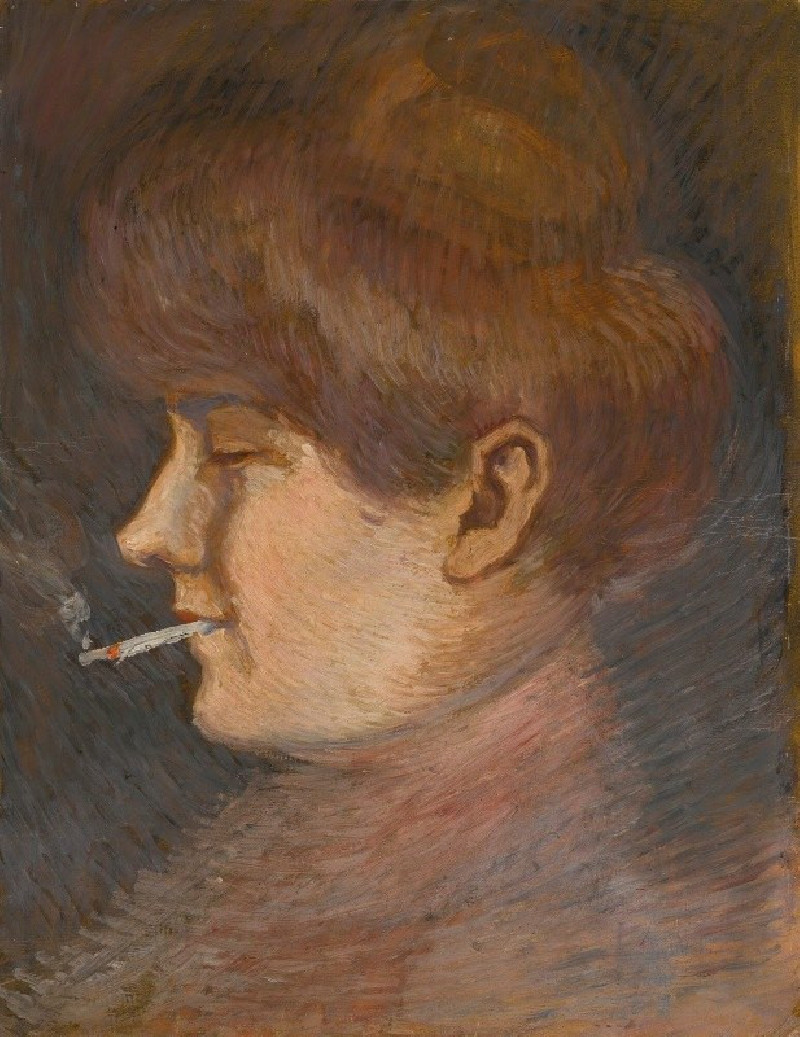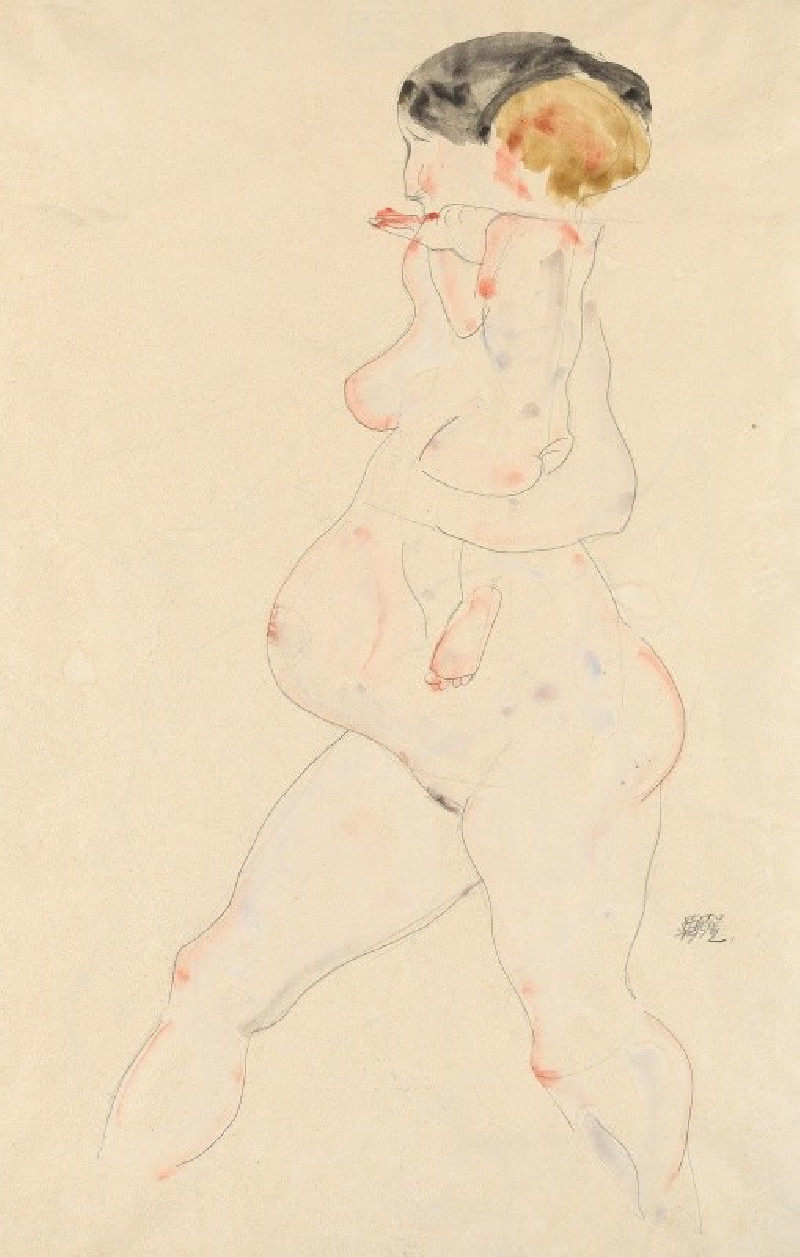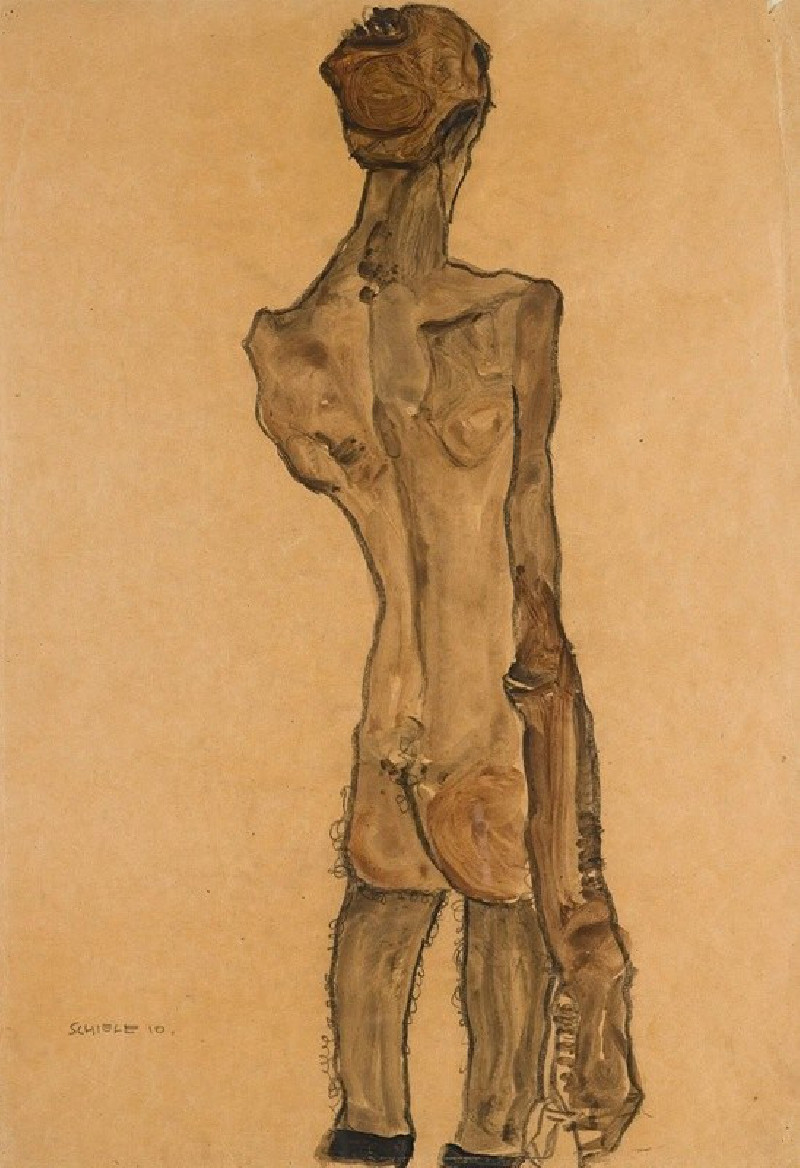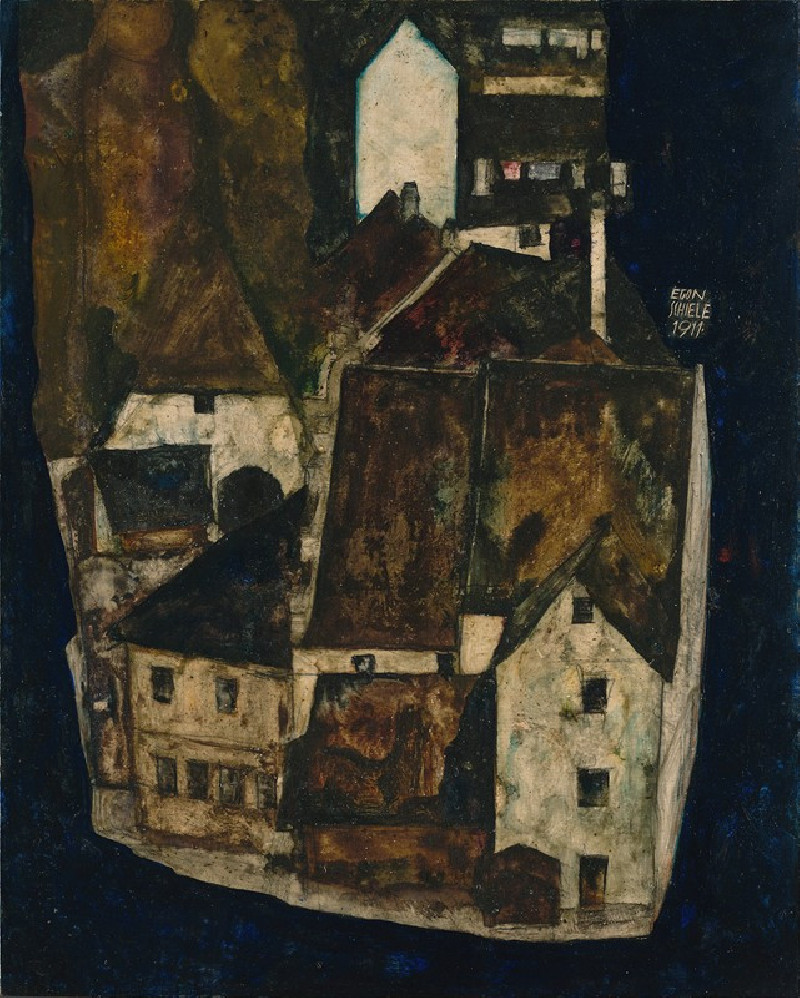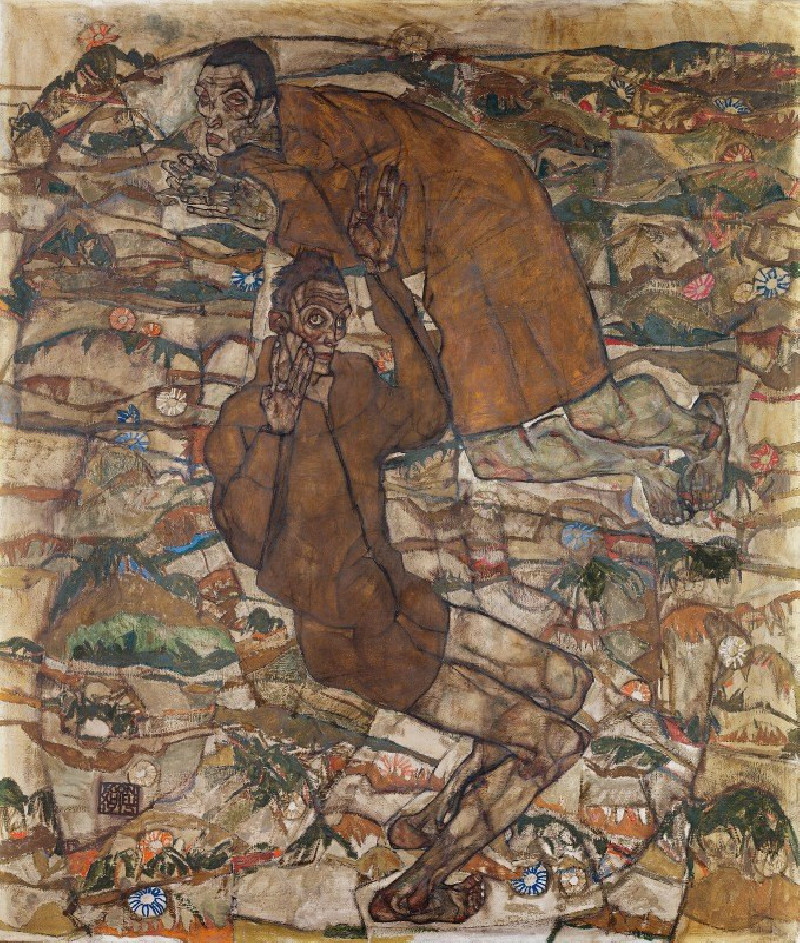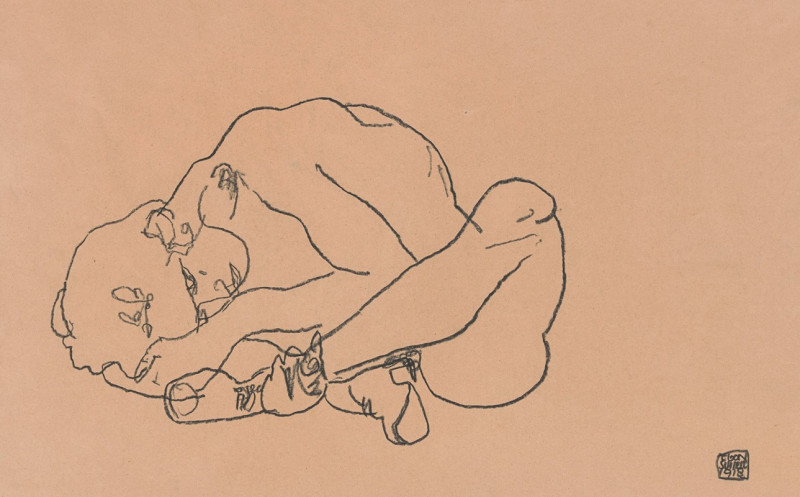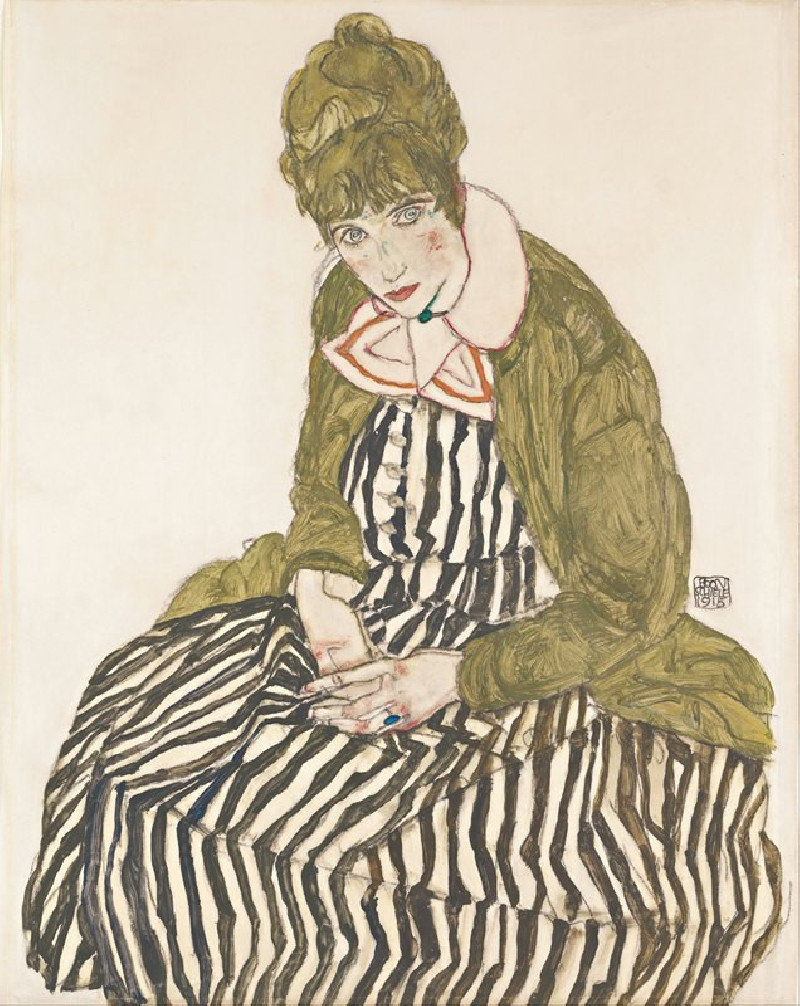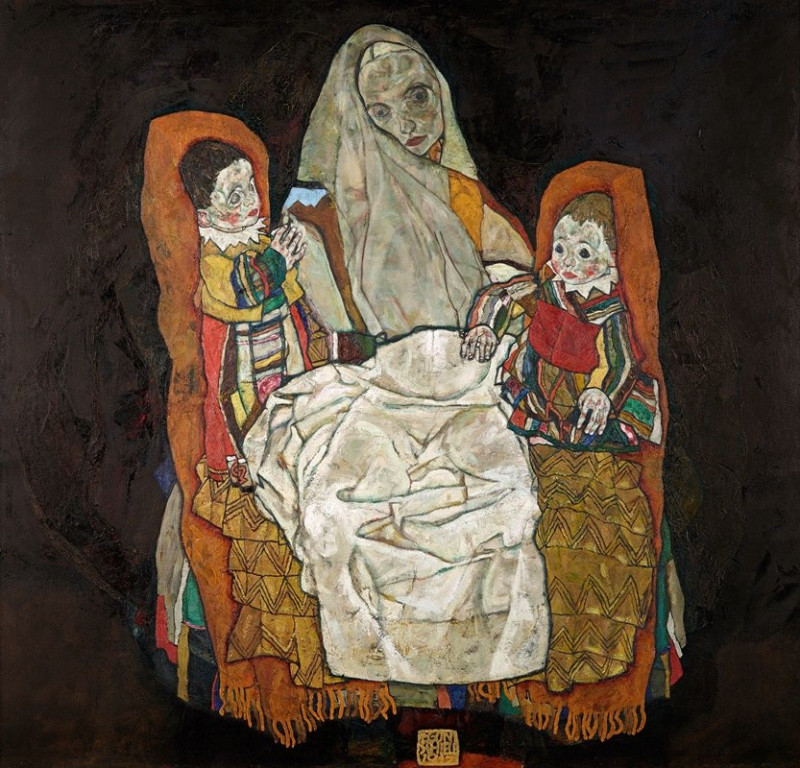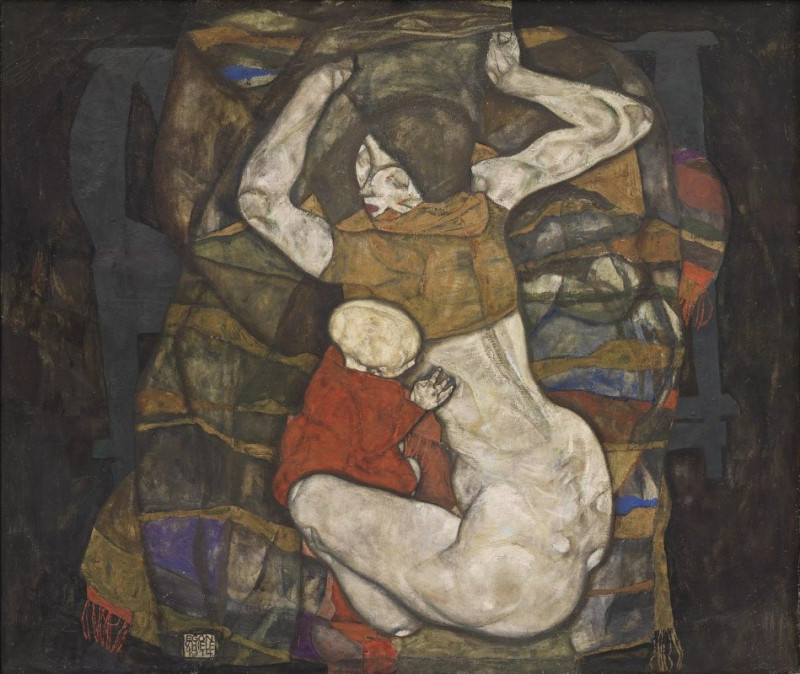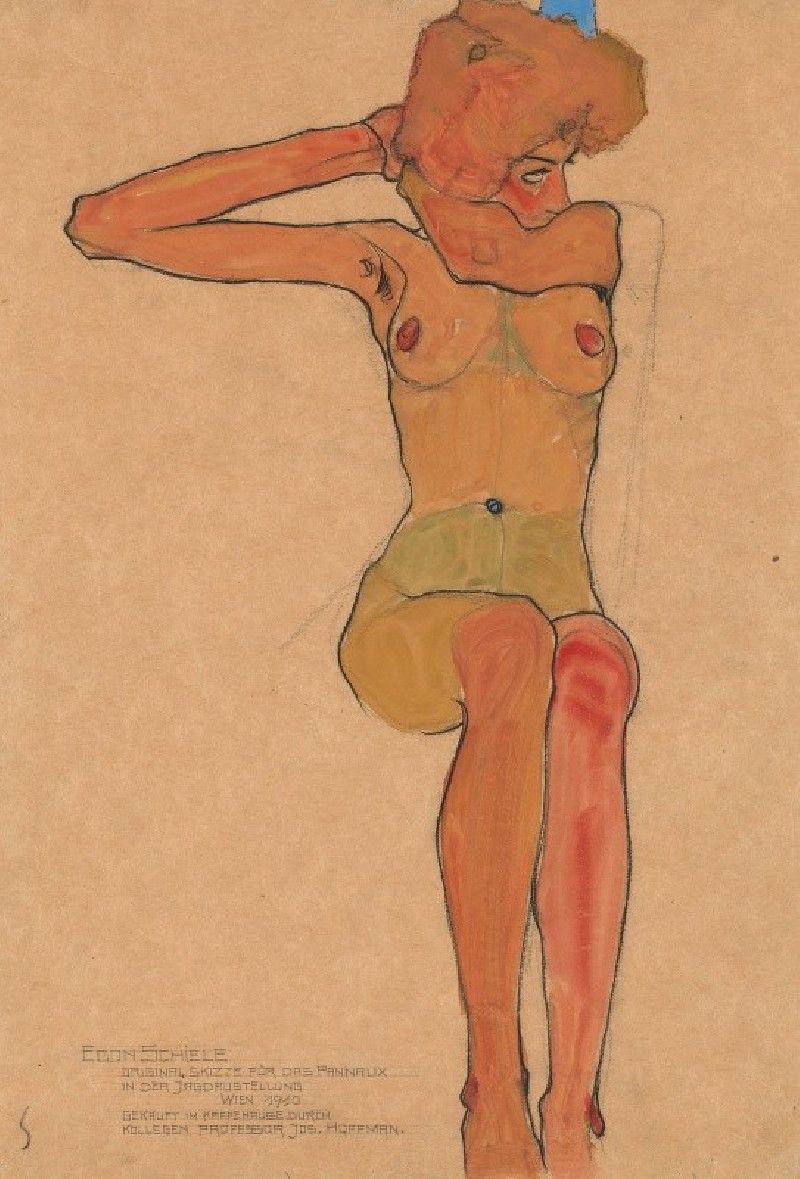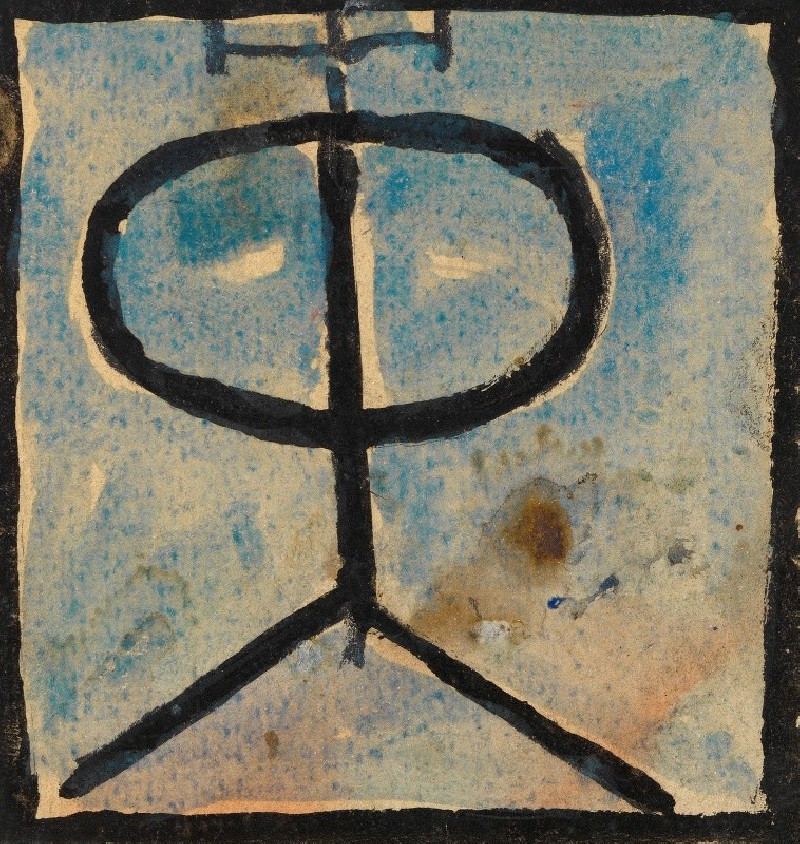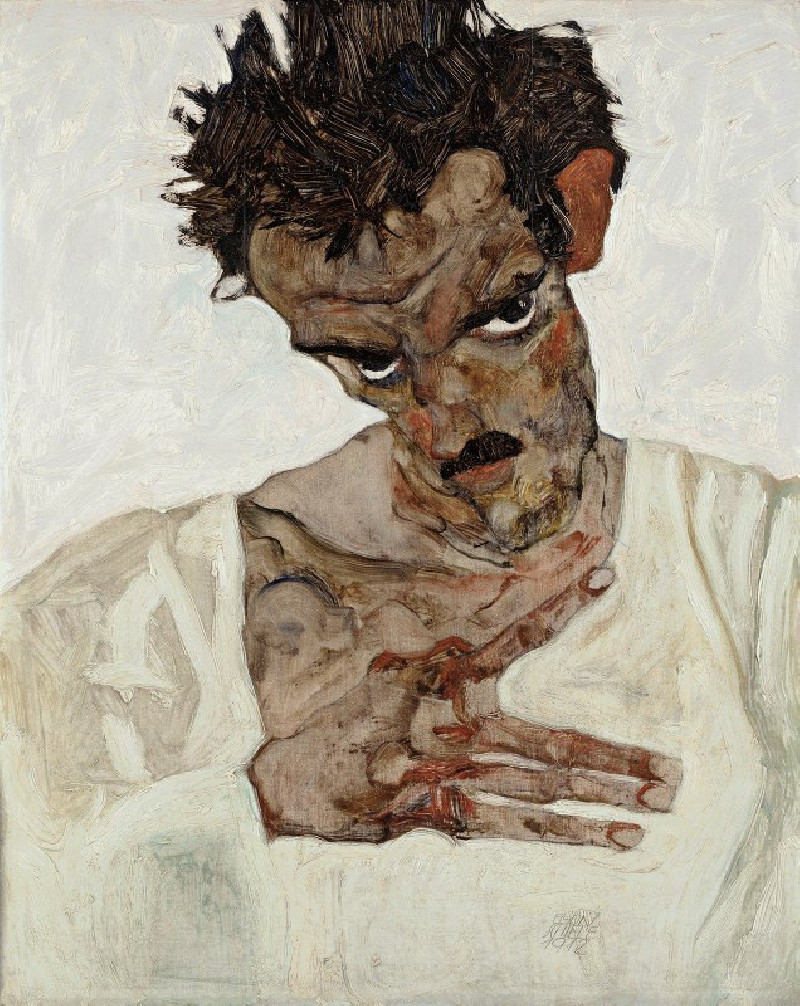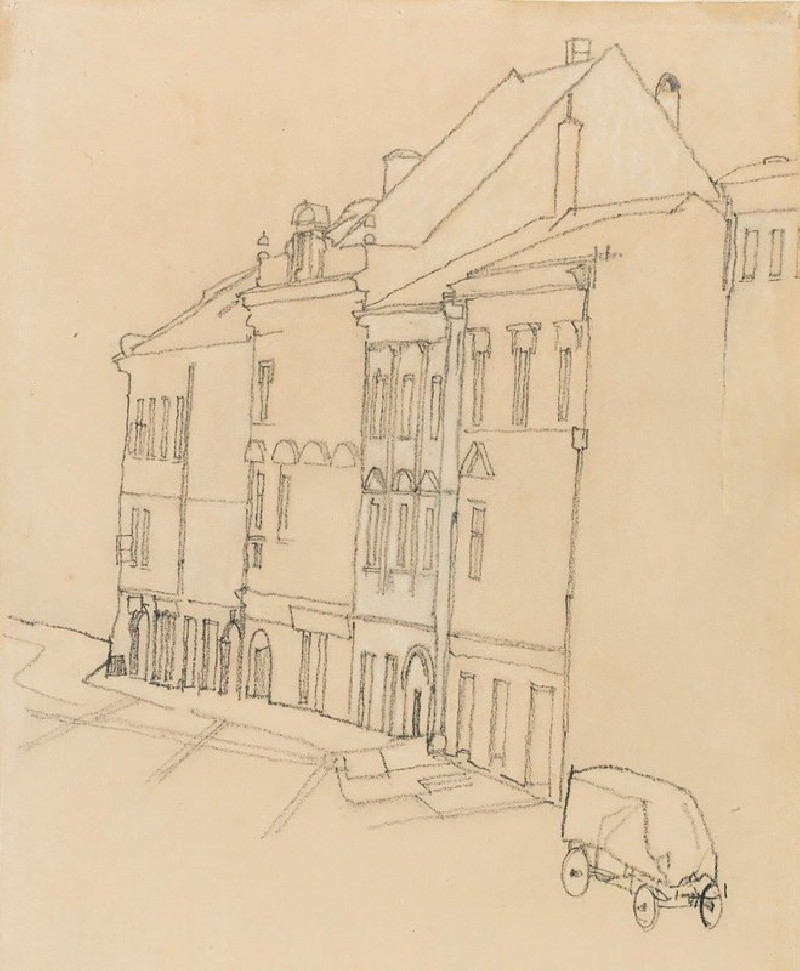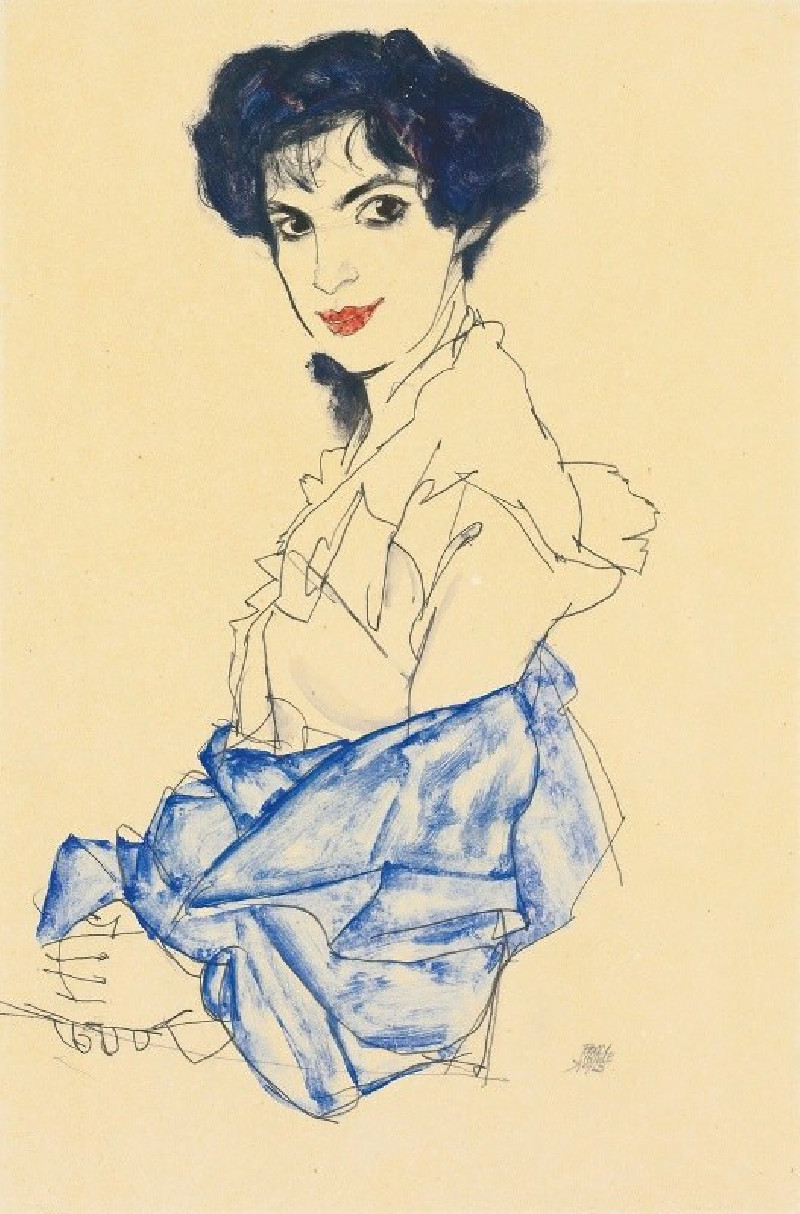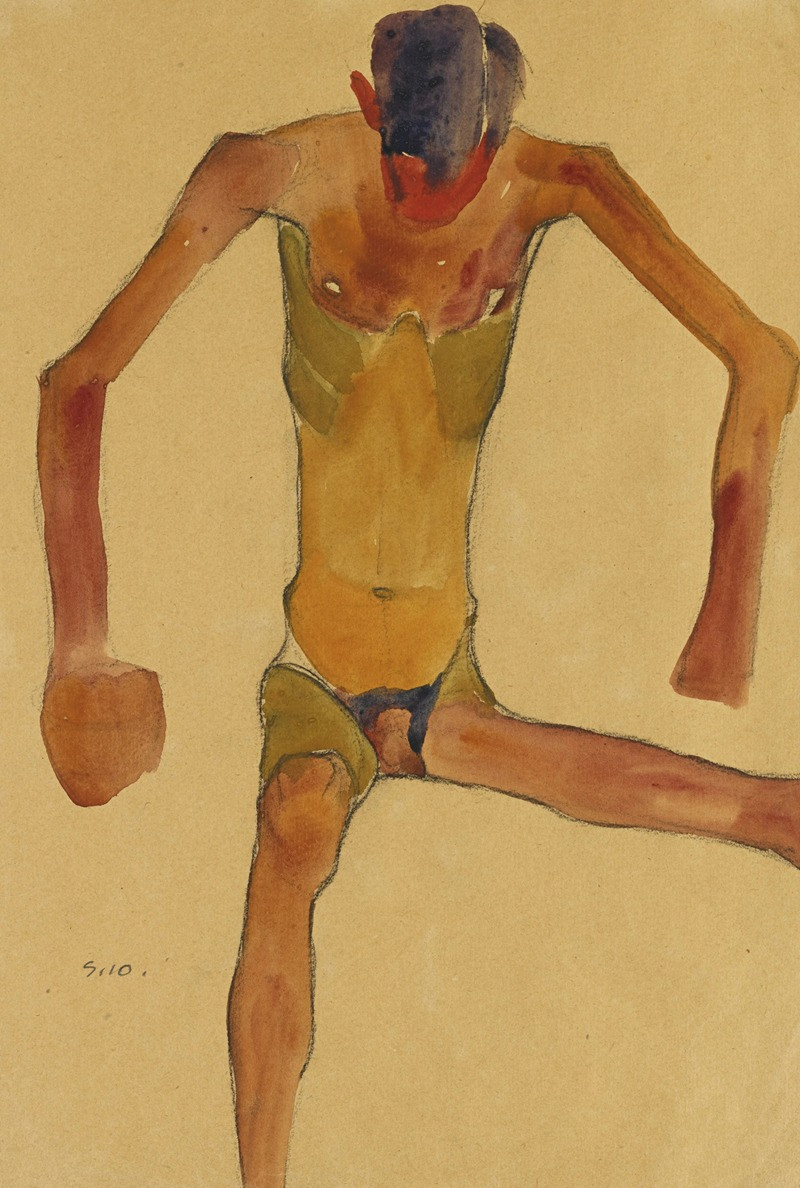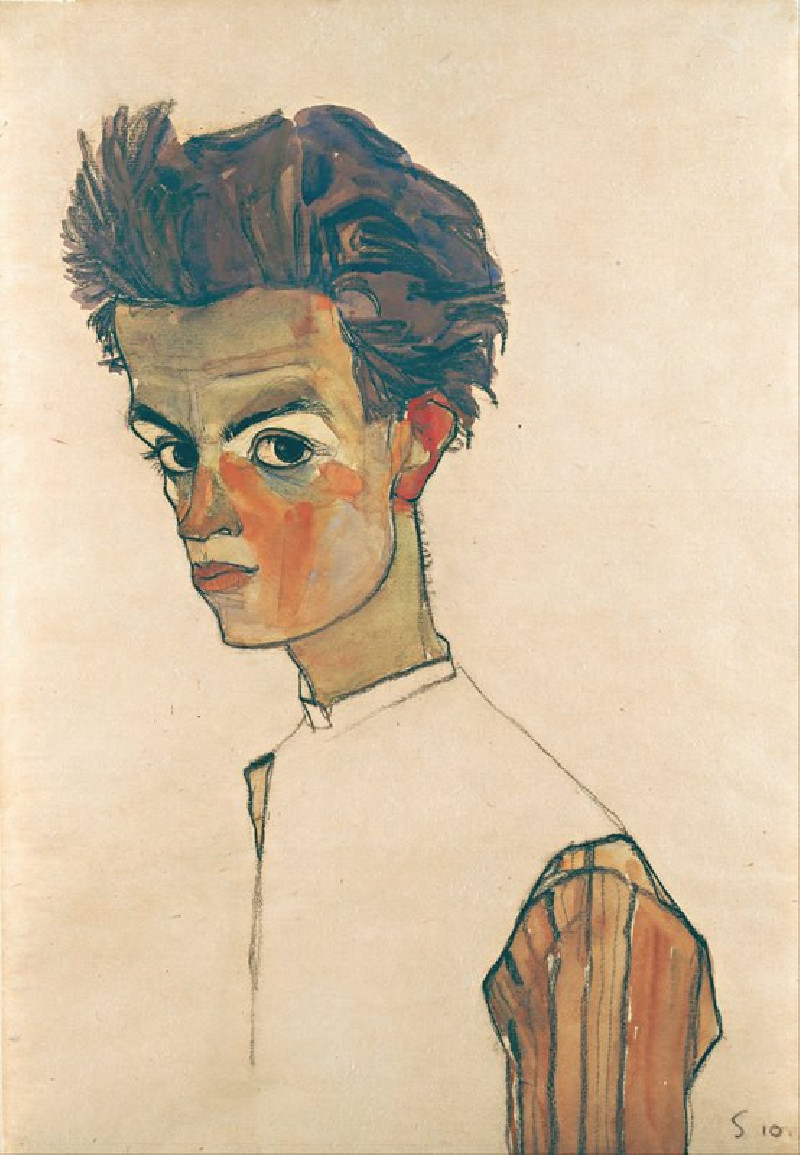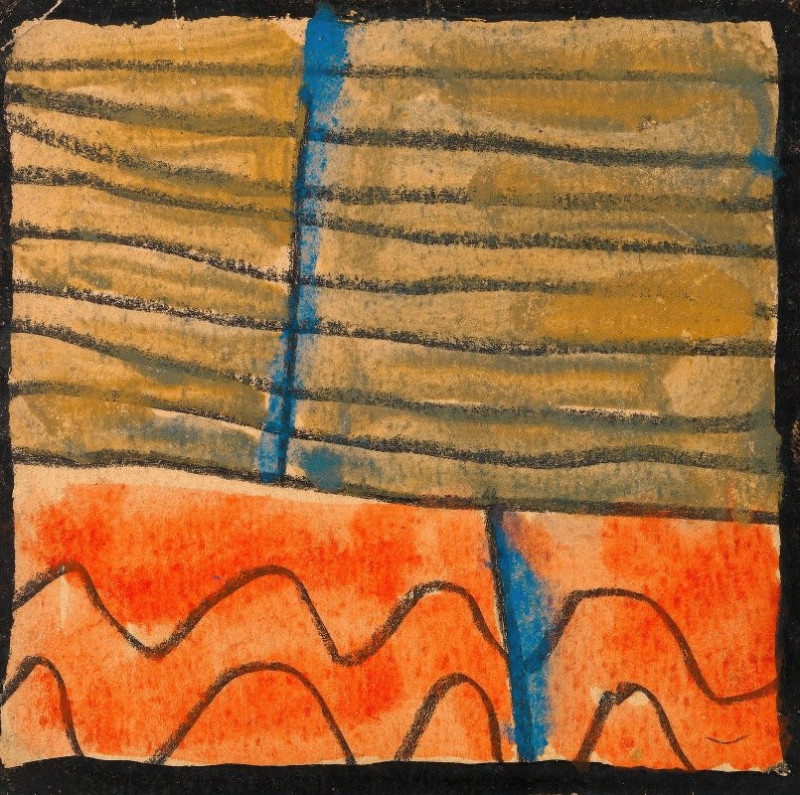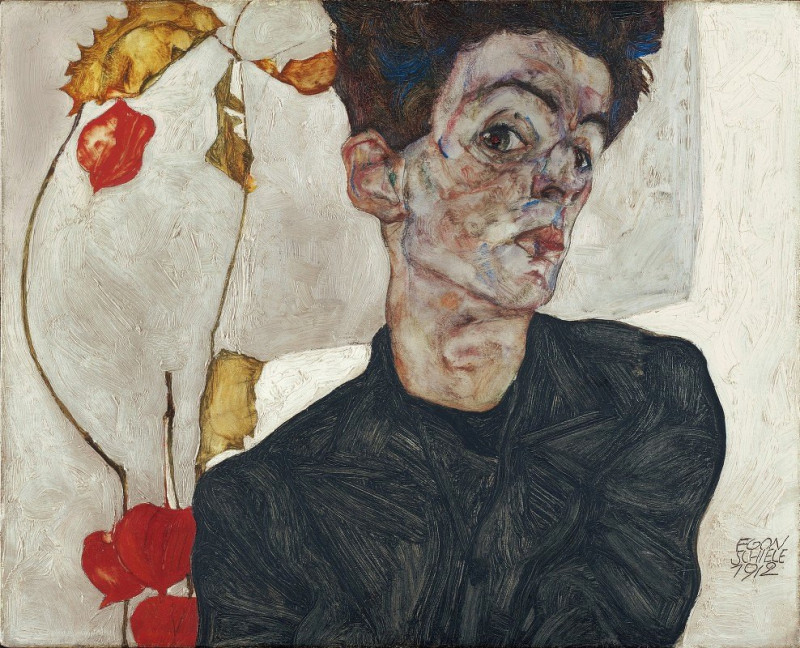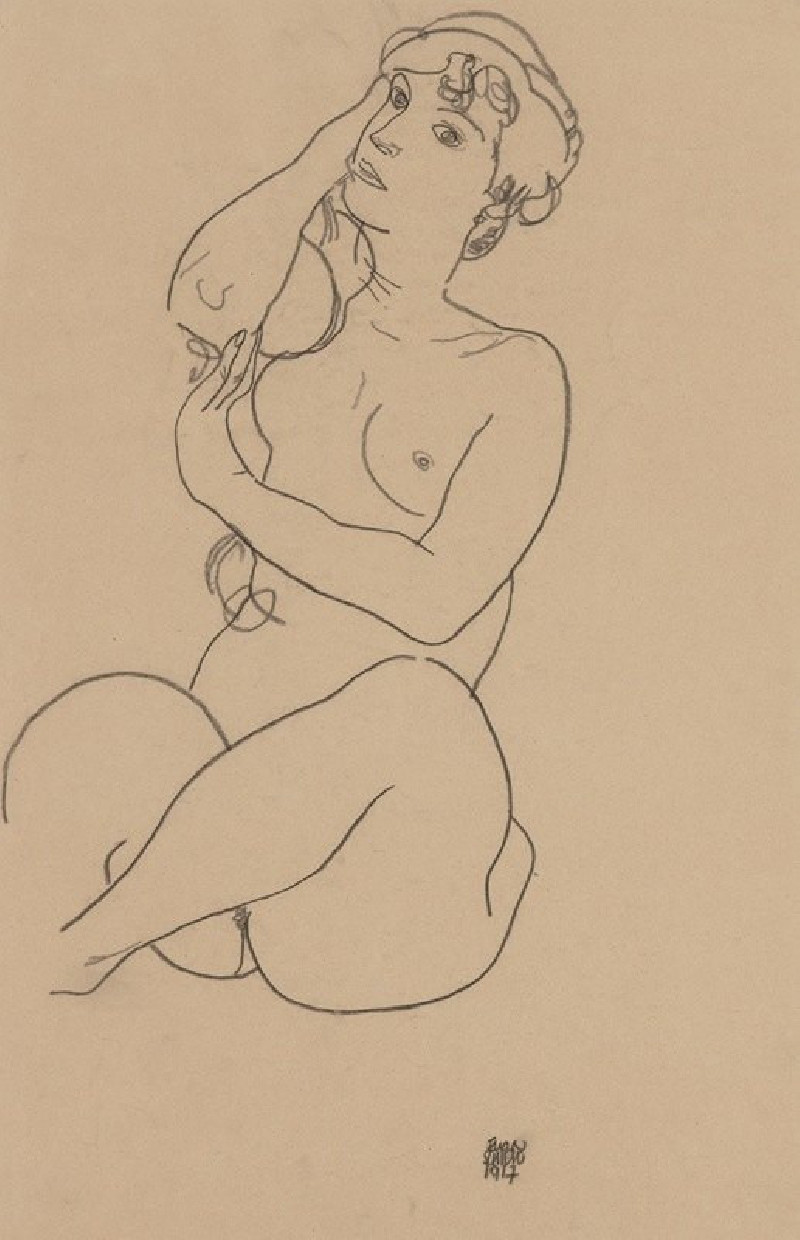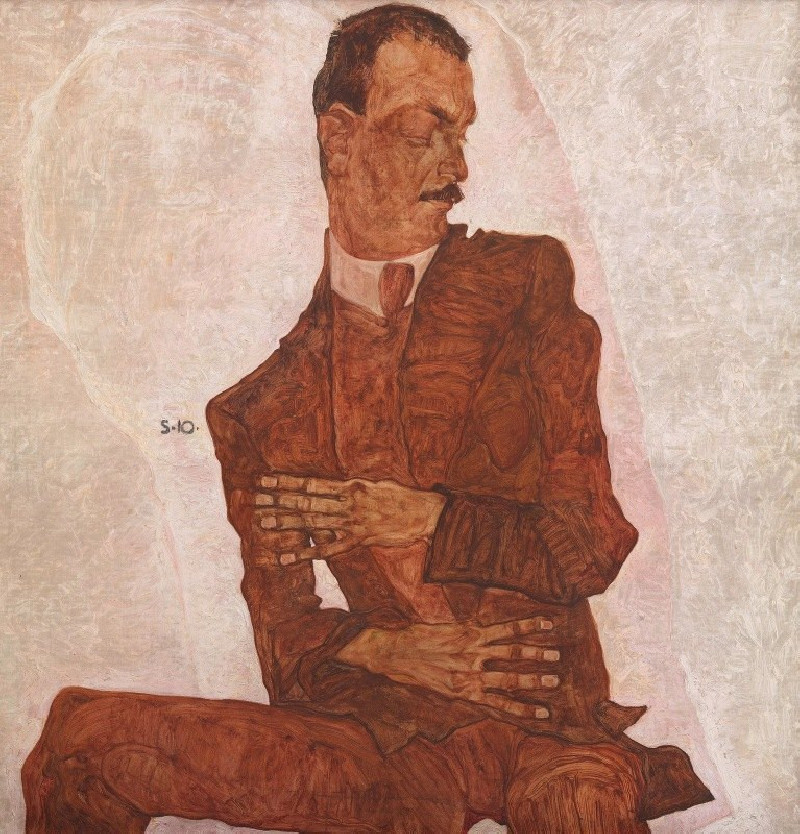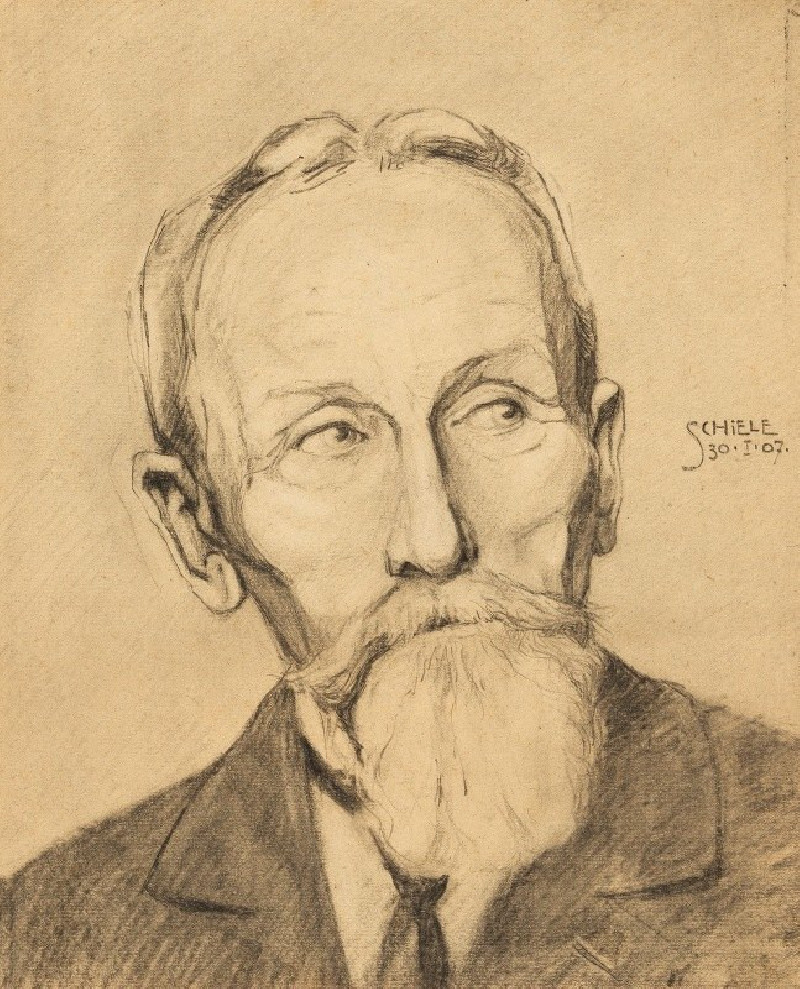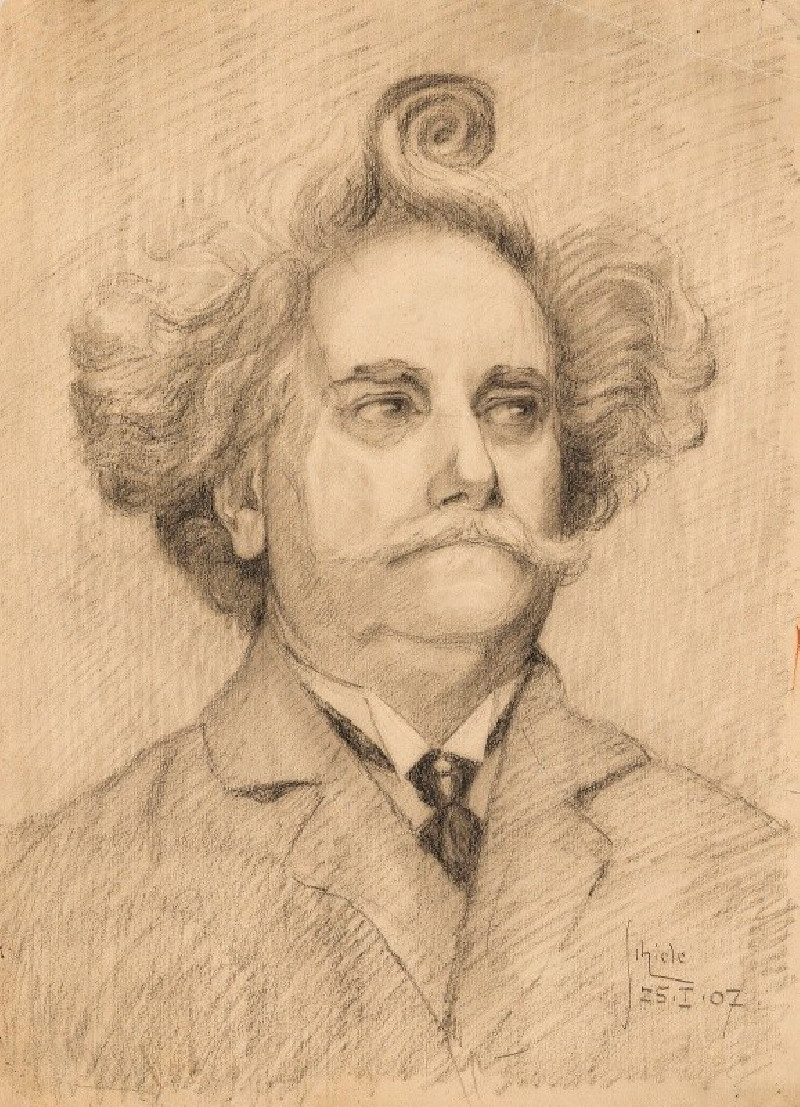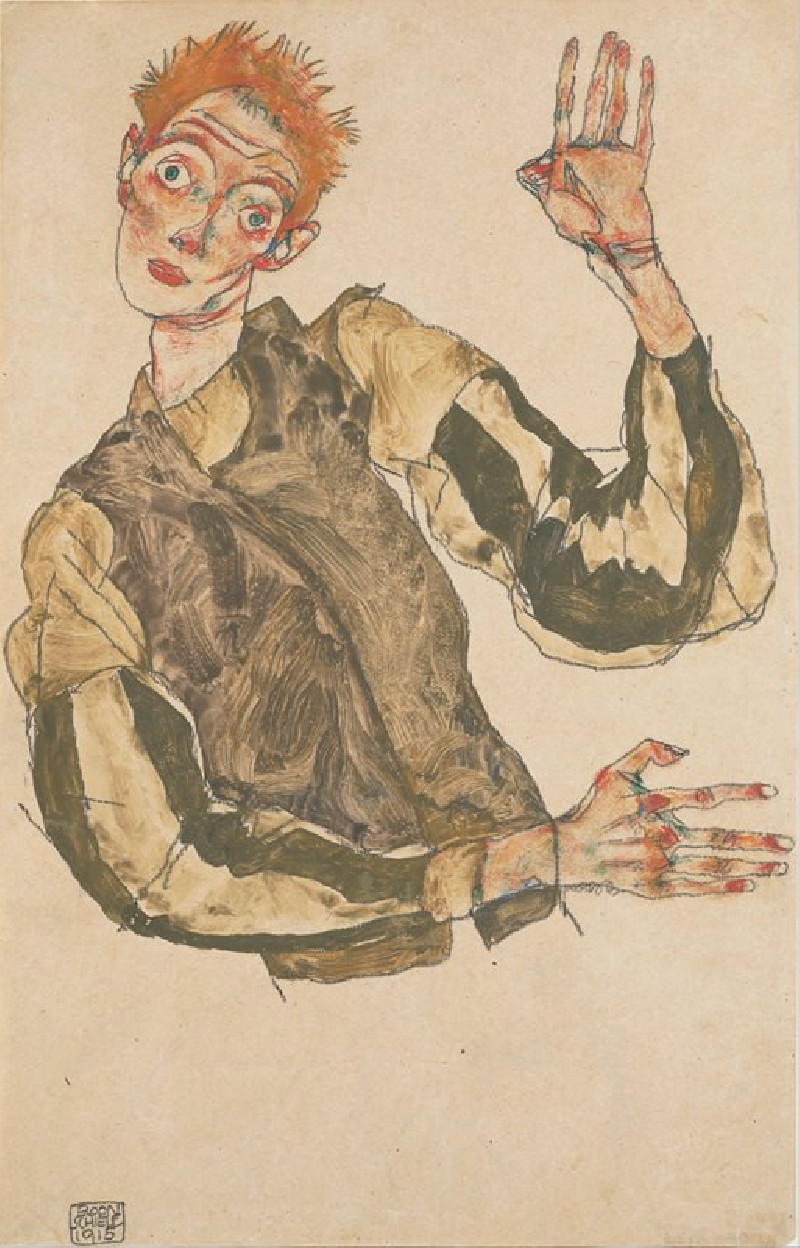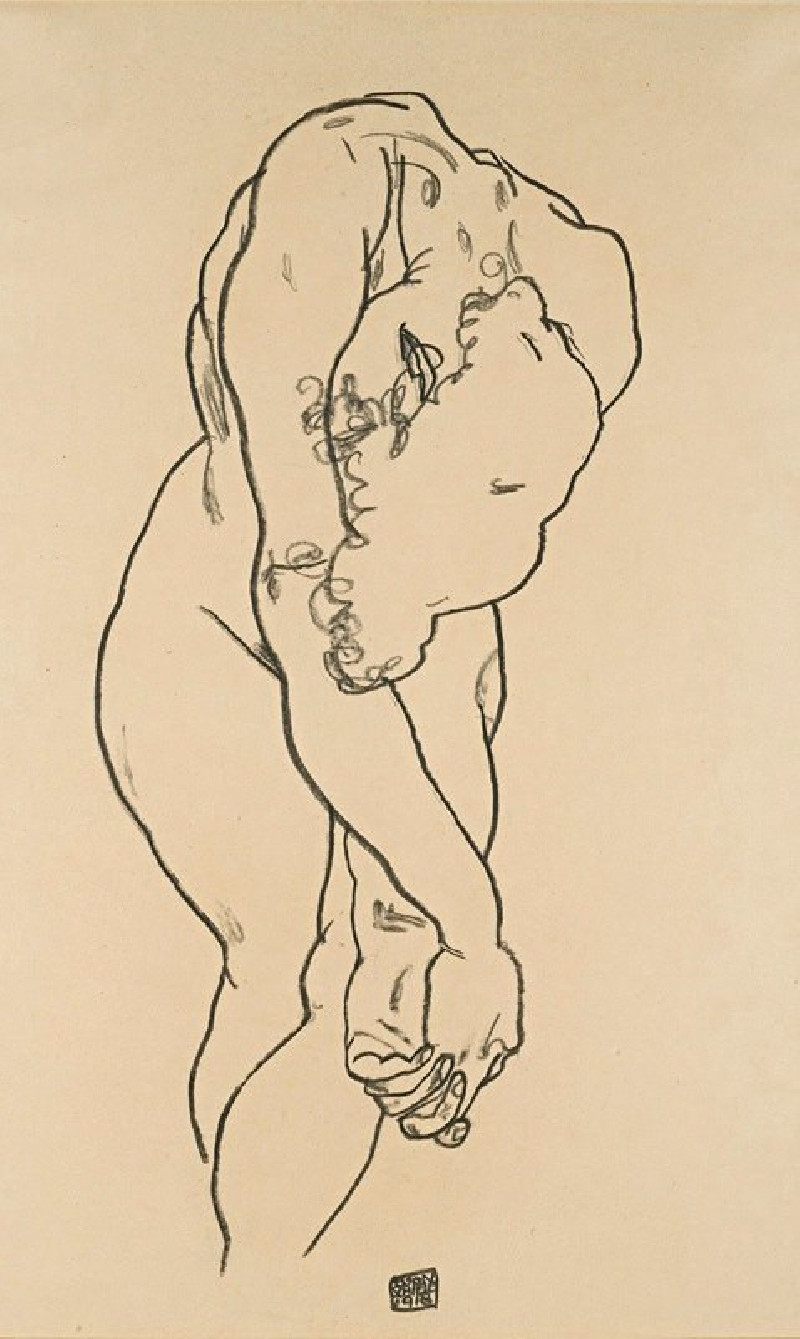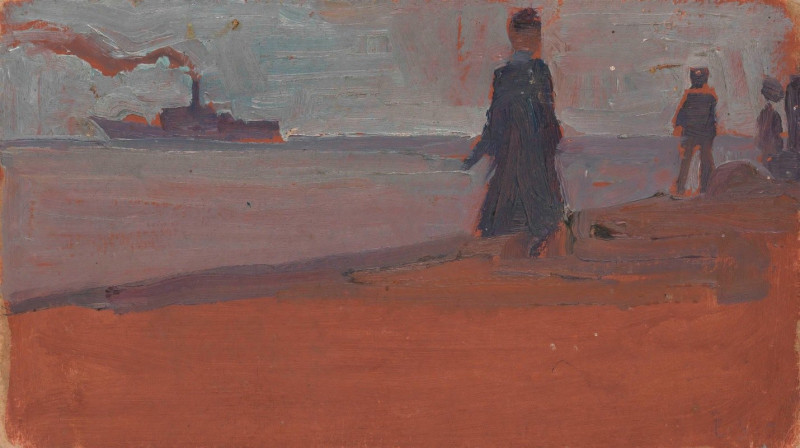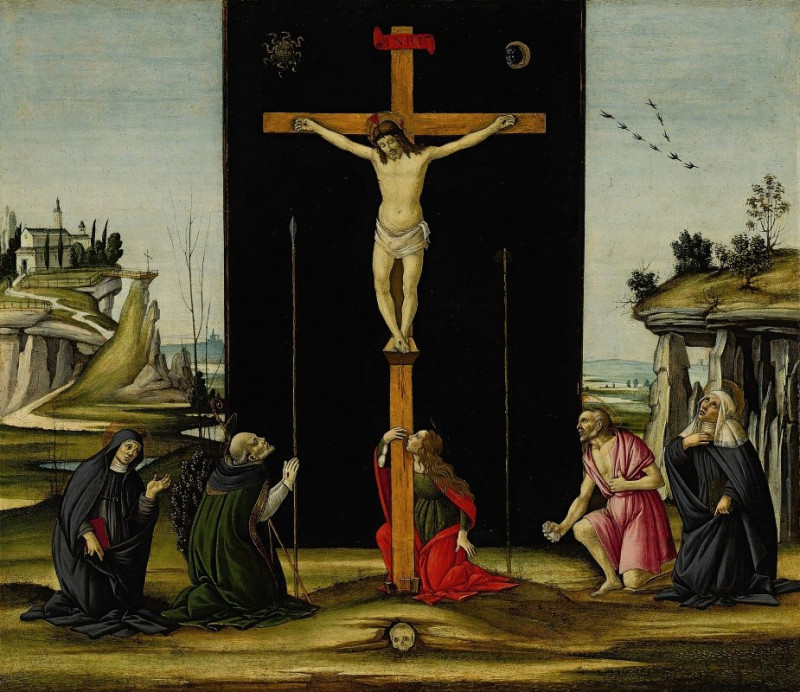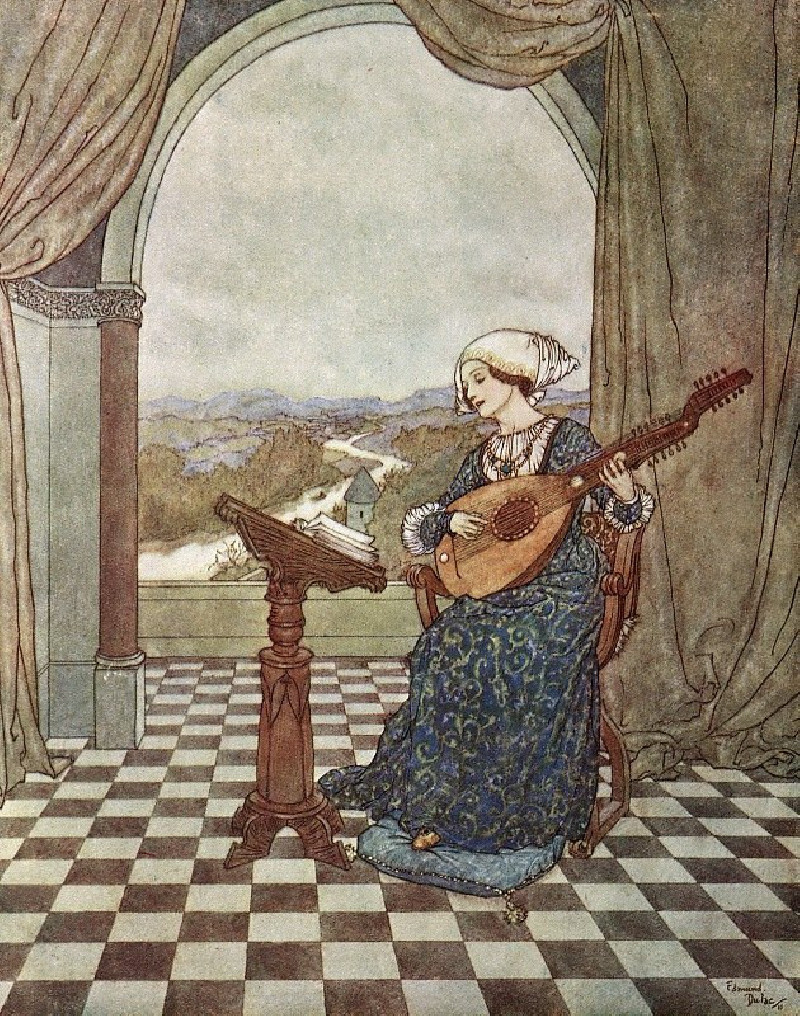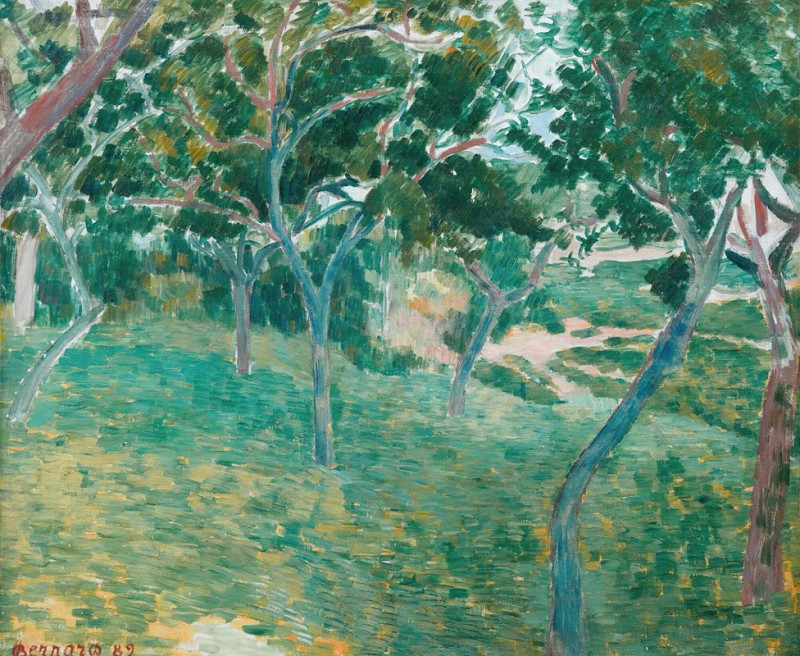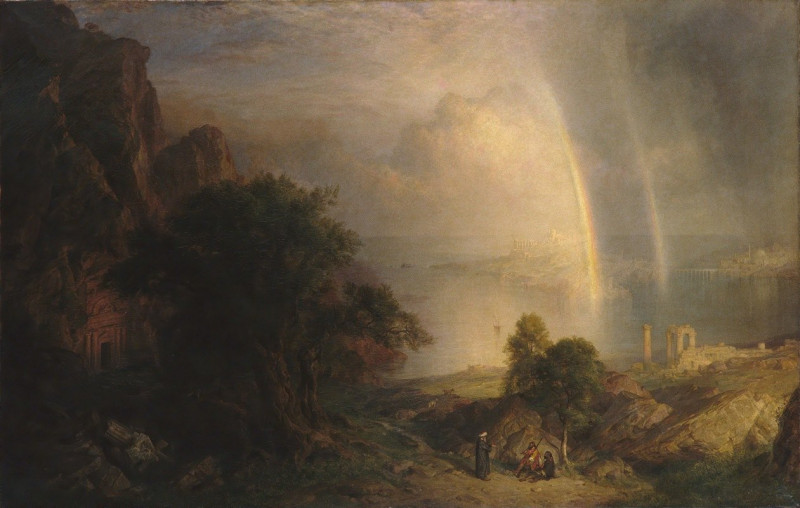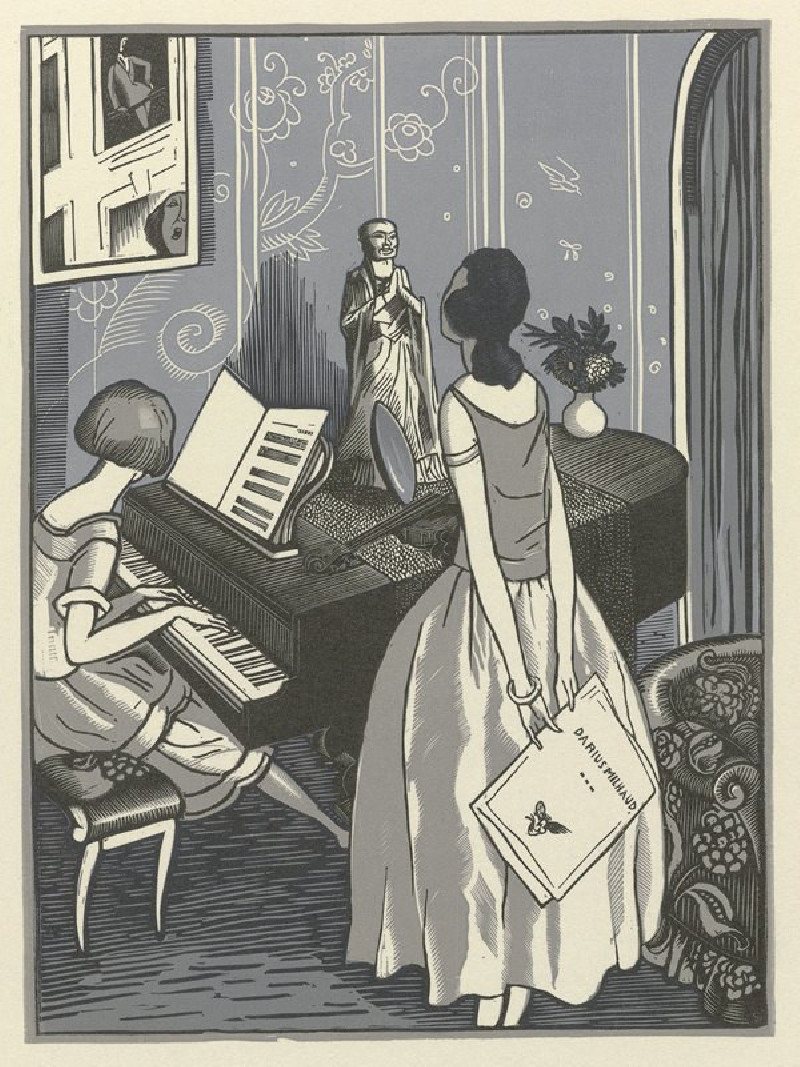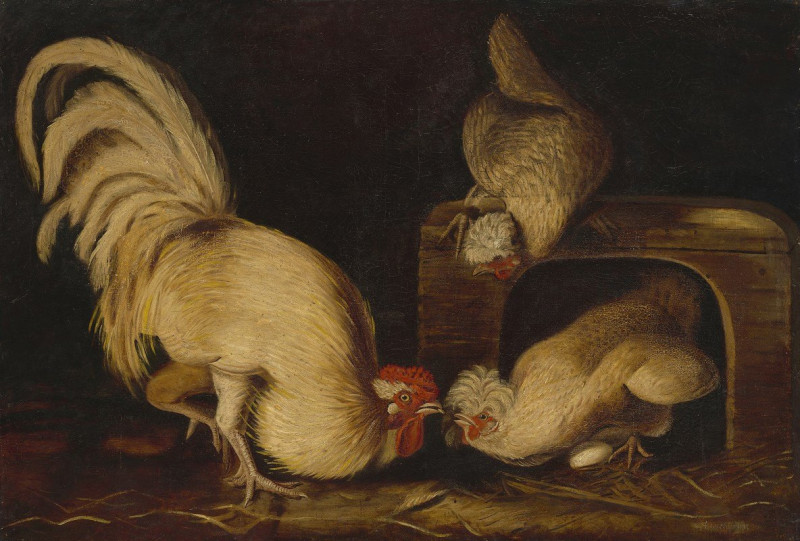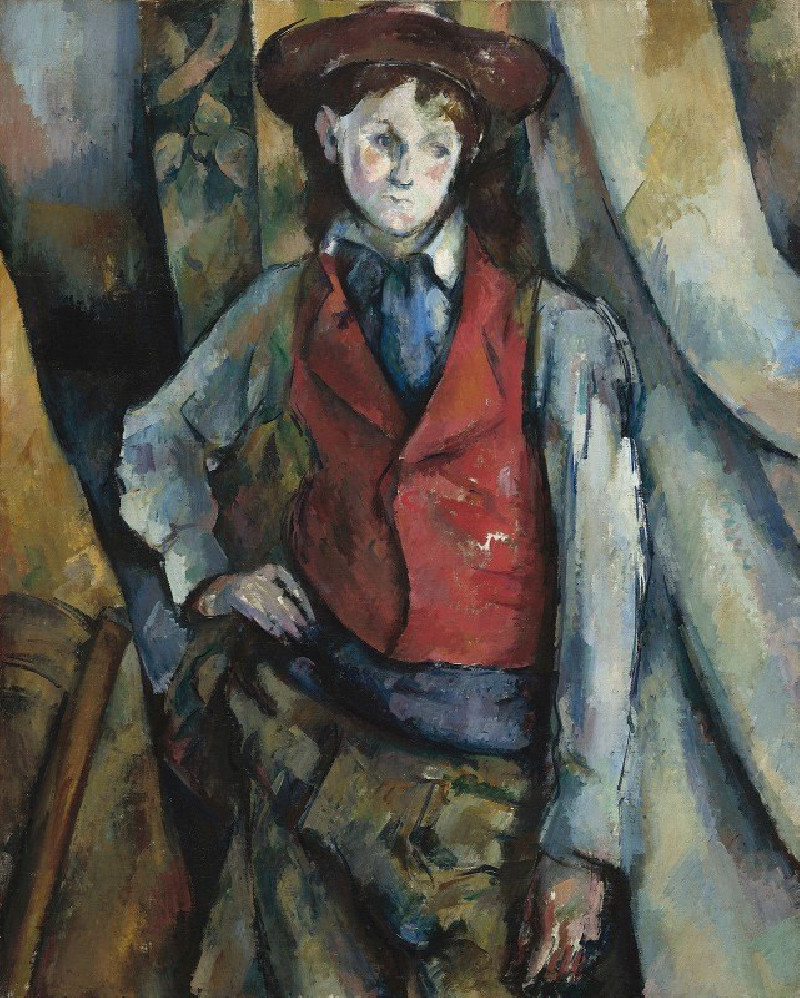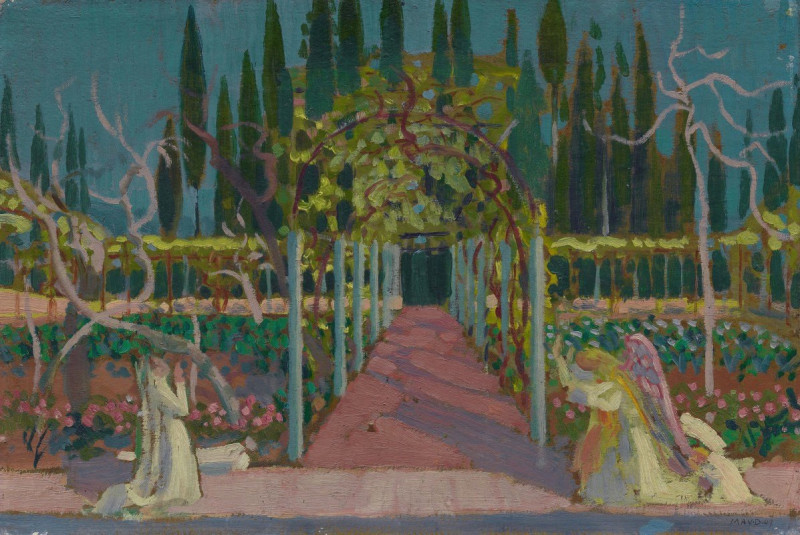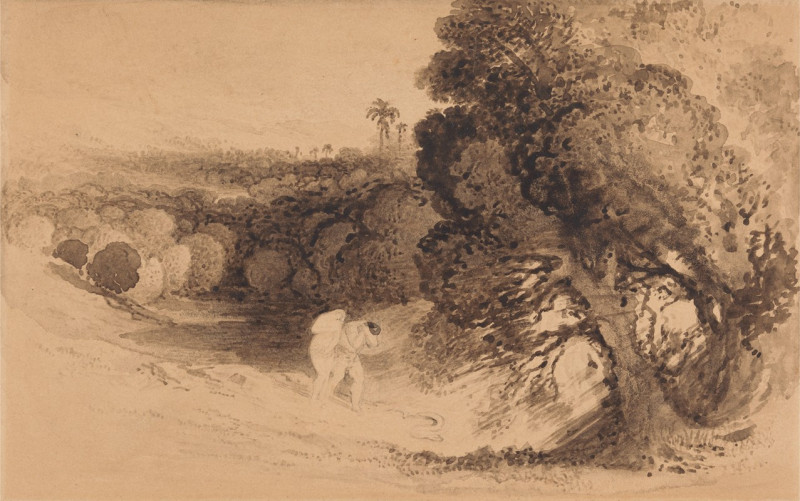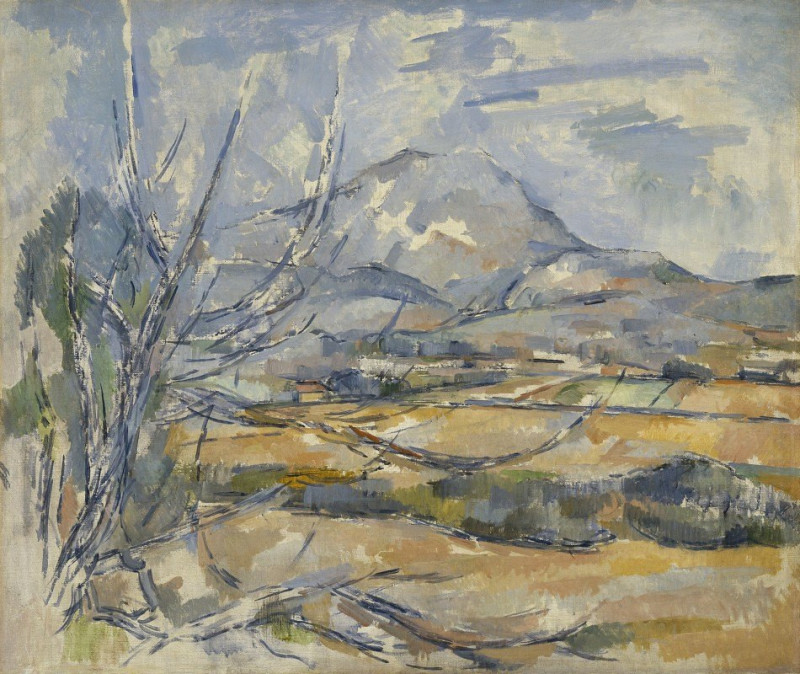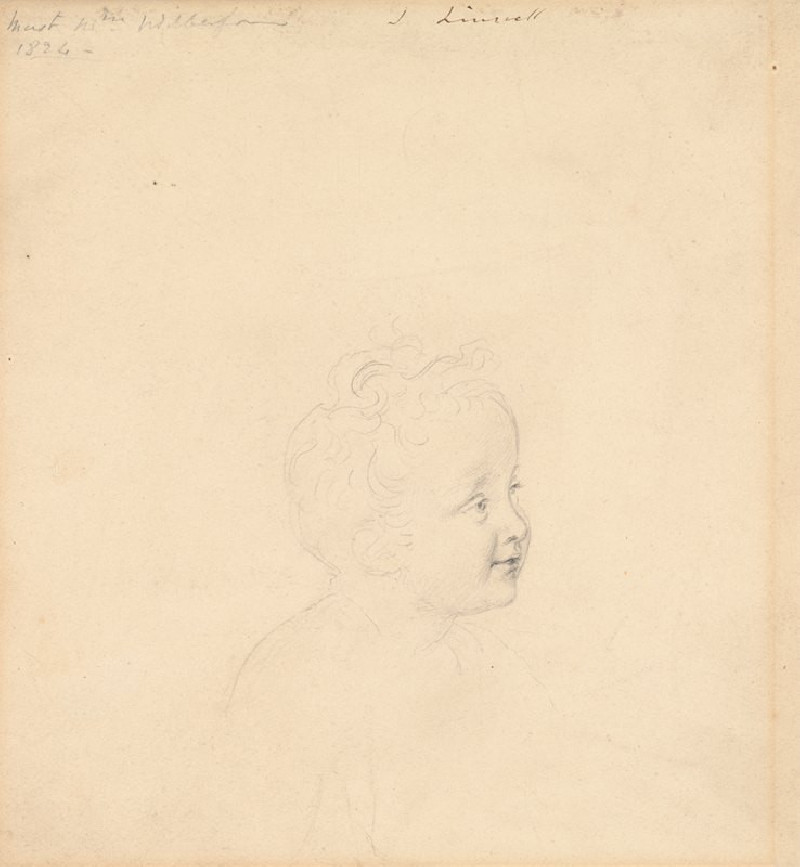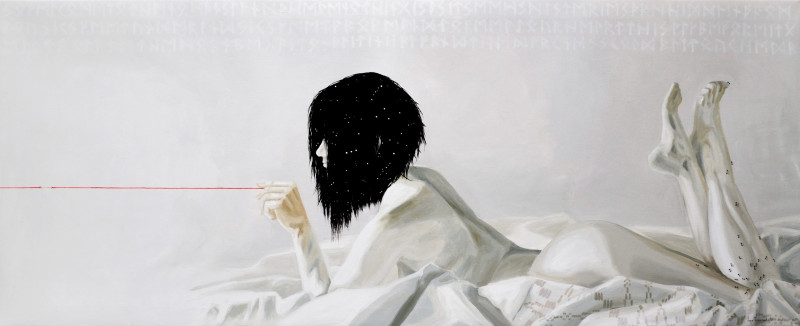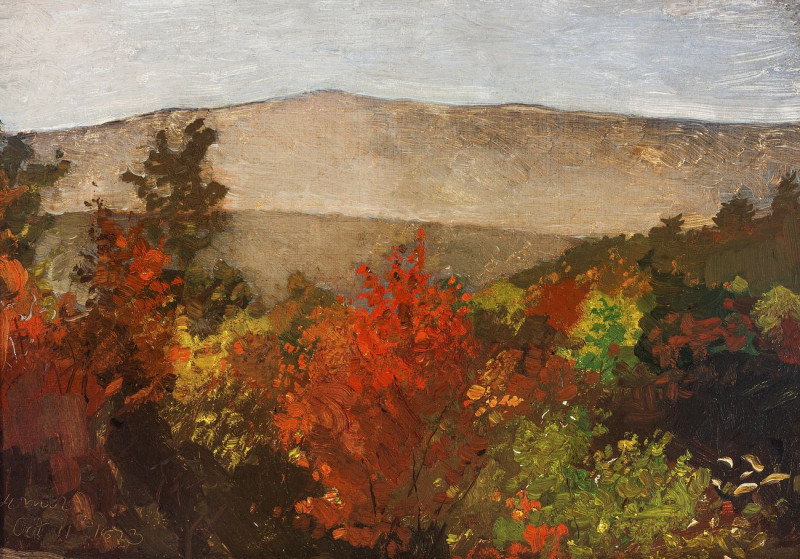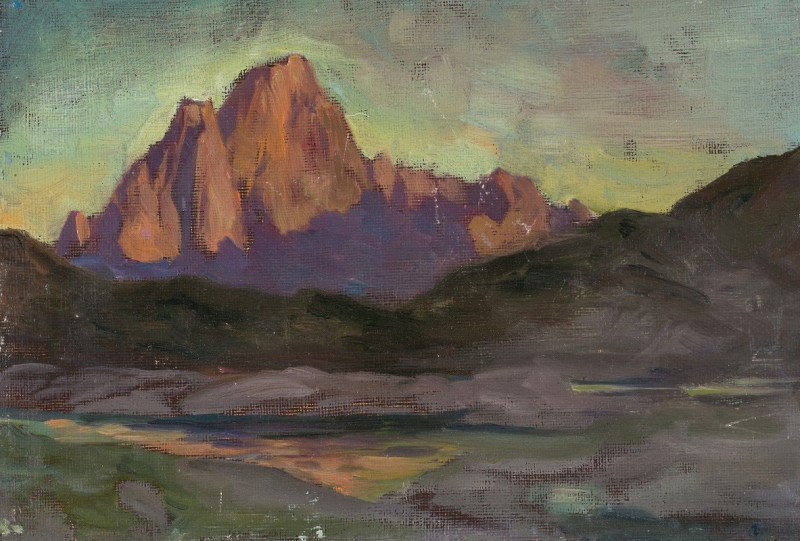üppiger weiblicher Akt (1918)
Technique: Giclée quality print
Recommended by our customers
More about this artwork
Egon Schiele's painting titled "Üppiger weiblicher Akt" (Lush Female Nude) from 1918 stands out for its bold expressionism and unconventional beauty characteristic of Schiele’s work. This painting depicts the form of a reclining female figure, rendered with expressive, contour lines that emphasize the fleshiness and curvature of the body. The work is marked by a stark, raw simplicity that draws attention to the physical form.The use of bold orange and russet tones set against a dark background enhances the sensual curves of the body, while the stark black outline defines and contains the form dramatically. The handwritten text within the composition adds a personal, almost intimate layer to the piece, suggestive perhaps of the artist's thoughts or an interaction between artist and muse.
Delivery
Returns
Egon Schiele was an Austrian painter. A protégé of Gustav Klimt, Schiele was a major figurative painter of the early 20th century. His work is noted for its intensity and its raw sexuality, and the many self-portraits the artist produced, including nude self-portraits. The twisted body shapes and the expressive line that characterize Schiele's paintings and drawings mark the artist as an early exponent of Expressionism.

